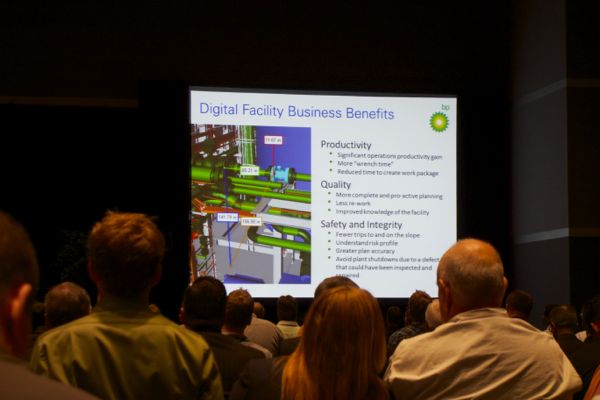Having spent over 14 years working in metrology and geomatics, in roles ranging from Research Scientist, Technical Consultant through to Global Sales Manager; Will Tompkinson is now Owner and Consulting Lead for Insightful Dimensions. Will provides international experience and perspective to clients who are deciding how to implement game-changing technologies such as UAVs and mobile mapping solutions to improve the bottom-line of both their operations, and that of their customers. While technology providers continue to strive to provide tools that are faster, lighter, higher, this blog aims to look at what the implications might be on the value of a firm’s solutions.

I need to thank Joseph Chumbley of Lockheed Martin Space for inspiring the title of the post that I have been mulling all day. Having worked within the 3D industry for almost 15 years, this year’s SPAR has highlighted a number of themes for me, starting from the get-go in Ralph Rio’s keynote this morning.
3D capture systems, and more specifically, 3D scanners are now mature technology. We have all been excited by the prospect of collecting an ever-increasing number of three-dimensional data points in lower periods of time. Furthermore we have all been wowed by what can be seen in a point cloud and the extent to which structures extracted from it reflect reality. These technologies have brought with them high investment, both in terms of its price-tag and effort put into developing workflows for its deliverables. What is resonating with me though, is that as an industry – its now payback time.
Ralph’s keynote summarized categories where the 3D market is largest. Between 2013-2014 the largest growth was seen in medium range (<40m) applications, closely followed by the close-range (<1m) market. It was summed up nicely when asked to consider how many parts go into assembling an airplane or an automobile, and also highlighted a side of the 3D imaging industry that I believe is still under-represented in the SPAR forum. Nevertheless, what were most important from this industry survey were the drivers, inhibitors and resultant opportunities. Namely the increased commoditization and price elasticity of system costs, the requirement to use these systems by teams that may not necessarily have a specialist skill-set; and with it, the requirement for increased automation. With these changes we are then finding that the business processes in which 3D imaging is applied are becoming much more iterative.
So why are these changes in where we place our focus important? One example was mentioned by presenters Richard Butkus and James Weed from Control Point Associates, where one of the most important lessons that can be learned from your first BIM–related project is that it increases the level of communication needed with the client. You don’t want to get to the end of a project and they ask “where are the light switches?” In addition to improving one’s requirements gathering, from a technology perspective this is where improved iteration could help.
What has been most impressive to me personally has been the extent to which very complete virtual models are now being used by the likes of BP and Lockheed Martin in a day-to-day operational context, and have been doing so now for a number of years. This has of course been possible using what we might consider to be the ‘traditional’ equipment and software workflows that we do, and should still, apply in our usual projects to collect, process and model 3D data. However, as highlighted by Dave Truch from BP especially, the challenge is now in maintaining these fantastic virtual environments.
To do this we look forward to seeing more of tools such as those from the automated modeling workflows presented by Rachel Collins from Chevron this afternoon. We also see increased applicability from the exhibition floor for tools that increase automation usch as those provided by companies such as Arithmetica in their Pointfuse product, with the aim to help us reach an end product quicker. Moreover, in a business process environment where we want to check that we are meeting our customer’s requirements, fill in any gaps, or make immediate decisions about how we apply our facilities models; portable and relatively low cost systems such as that by the exhibitor Dot Product have their place in helping our industry meet the evolving requirements of our customers quicker. These and many other developments presented at this year’s SPAR, have to increase the life and value of the investments that have been made in our industry to date.






